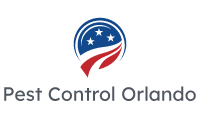In Pest Control Orlando, do swarmers mean you have termites? Find out in this informative article. Discover the telltale signs of termite swarmers and what it means for your property. Stay informed and protect your home from termite damage.
Understanding Termite Swarmers: What They Mean for Pest Control in Orlando
Frequent Questions
Are swarmers a definite sign that I have termites in my Orlando home?
Swarmers can be a potential sign of a termite infestation in your Orlando home. Swarmers are reproductive termites that venture out of their nests in search of a mate and a new location to establish a colony. If you see swarmers inside or around your property, it is likely that there is an active termite colony nearby.
However, swarmers alone do not confirm the presence of termites. It is necessary to conduct a thorough inspection by a professional pest control company to determine if there is an infestation. These experts will look for other signs, such as mud tubes, damaged wood, frass (termite droppings), or hollow-sounding wood, to confirm the presence of termites.
If you suspect a termite infestation in your Orlando home, it is recommended to contact a licensed pest control company that specializes in termite treatments. They can assess the situation, develop a customized treatment plan, and provide ongoing monitoring to protect your property from further damage.
How can I differentiate between termite swarmers and other flying insects in Orlando?
Termite swarmers are winged termites that emerge from a termite colony for the purpose of reproduction. They are often mistaken for other flying insects such as ants or flies. Here are some ways to differentiate between termite swarmers and other flying insects in Orlando:
1. Body shape: Termite swarmers have straight, thick waists and their bodies are straight-sided. In contrast, ants have narrow waists and their bodies are pinched at the waist.
2. Wing size and shape: Termite swarmers have two pairs of wings that are equal in length and have a straight, vein-like appearance. Other flying insects may have wings that are uneven in length or have a more net-like pattern.
3. Color: Termite swarmers are usually light or translucent in color, with shades of beige, brown, or black. Ants and flies, on the other hand, can vary in color and may have spotting or patterns on their bodies.
4. Antennae: Termite swarmers have straight antennae that resemble strings of beads. Ants have elbowed antennae, while flies have short antennae with a bristle-like appearance.
5. Behavior: Termite swarmers are attracted to light sources and are commonly seen swarming around windows, lights, or other light fixtures. Other flying insects may not exhibit the same behavior.
If you are unsure about the identification of the insect, it is best to contact a professional pest control company specializing in termite control. They will be able to accurately identify the insect and provide appropriate treatment options if necessary.
What steps should I take if I spot swarmers around my property in Orlando to prevent a termite infestation?
If you spot swarmers around your property in Orlando, here are the steps you should take to prevent a termite infestation:
1. Identify the swarmers: Swarmers are winged termites that emerge from nests to mate and start new colonies. They are often mistaken for flying ants. Take a closer look at the insects to confirm if they are termites.
2. Contact a professional: In the case of termite swarmers, it is highly recommended to call a professional pest control company specializing in termite treatment. They will conduct a thorough inspection to determine the extent of the infestation and recommend appropriate measures.
3. Avoid disturbing the swarmers: While waiting for professional help, it’s best not to disturb the swarmers or use any DIY treatments. Disturbing them may cause them to scatter and establish multiple colonies, making the situation worse.
4. Inspect your property: Look for signs of termite activity, such as mud tubes, wood damage, discarded wings, or frass (termite droppings). Inspect both the interior and exterior of your property, including foundations, walls, basements, crawl spaces, and attics.
5. Eliminate moisture sources: Termites thrive in damp environments. Reduce excess moisture around your property by fixing leaks, improving drainage, and ensuring proper ventilation in areas prone to high humidity, such as basements and bathrooms.
6. Remove wood debris: Clear any potential food sources for termites, such as fallen trees, stumps, or wood piles, from your property. Keep firewood elevated and away from the foundation of your home.
7. Install physical barriers: Consider installing physical barriers like metal screens or sand barriers between the soil and the foundation of your home to prevent termite entry.
8. Regular inspections: Schedule regular termite inspections by professionals to catch any signs of termite activity early on and take preventive measures promptly.
Remember, termite infestations can be difficult to handle on your own, so it’s best to seek professional assistance to ensure effective and long-lasting pest control in Orlando.
In conclusion, the presence of swarmers does indicate a possible termite infestation. However, it is important to note that swarmers alone do not confirm the presence of termites in your home. It is crucial to consult with a professional pest control company in Orlando to accurately identify and treat any termite issues. By taking immediate action, you can protect your property from costly damages caused by these destructive pests. Remember, prevention and early detection are key when it comes to effective termite control in Orlando. Don’t wait until it’s too late – schedule a termite inspection today to ensure the long-term health and safety of your home.
